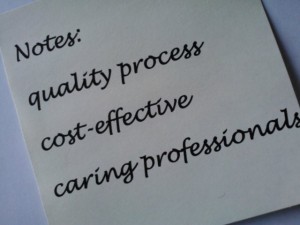I just finished watching the documentary,
Divorce Corp, and I have to admit that I have mixed feelings. On the one hand, as someone who has devoted his career to helping people understand that divorce should not occur in court, or even in the shadow of the courthouse, this movie may be a powerful tool in raising awareness of this very serious issue. On the other hand, as someone who feels dedicated to the truth and who feels a deep commitment to helping people fully understand their options in a fair and honorable manner, I bristled at some of the sensationalism and the broad generalizations made from some extreme examples.
To the extent that the movie attempts to show that the problem with our family law system is that it is inundated with corrupt judges, greedy lawyers and dishonest custody evaluators, I need to state very clearly that I do not believe that to be true. Having worked in the family law system in Minnesota for more than 30 years, including two decades in court, I have found that the majority of judges, divorce lawyers and custody evaluators are honest people who care about children.
Indeed, one of the reasons I strongly believe that the adversarial system does not work in resolving family issues, is that operating in the shadow of an adversarial system often damages families
even when you have good people involved. There is much need for reform of our system and there is a strong need to raise awareness about the alternatives to court. I had hoped that the movie would help people understand the existing alternatives to court rather than focusing almost exclusively on proposing legislative changes.
To the credit of the movie makers, they did feature excellent commentary from two very credible peacemakers that I have come to know quite well. Woody Mosten and David Hoffman, two law professors who are worldwide leaders in mediation and Collaborative Practice, gave the movie producers valuable insights on how we can help families find a better way. While very few of those insights made it into the movie, the producers did
release a trailer that discussed the benefits of mediation and Collaborative Practice as alternatives to court. An article by David Hoffman also does a good job summarizing many of the shortcomings of the film.
As for the rest of the movie, I am recommending that people see the movie and draw their own conclusions. Even if you disagree with some of the exaggerations and proposed solutions, as I clearly did, it will at least get us all thinking and talking about this important issue. If you happen to be someone who is facing divorce, you should not emerge from this moving believing you will have found any answers or even a real grip on the truth of our family law system. Rather, my hope is that the movie will cause you to respect the important question about how to proceed with divorce so that you will seek out reliable information about all of your options.
To learn more about Collaborative Law and other options that I believe are not clearly understood, go to
www.collaborativelaw.org and www.divorcechoice.com.
 In my last blog I wrote about how people travel all around the world to learn about how we Collaborative divorce in Minnesota. In this blog, I want to say a little bit about why that is true.
Describing all of the elements of Collaborative Divorce would require more than we could put in one blog. I want to focus on the one element that may stand out above the others: choice.
People who face family conflict need choices. Collaborative Divorce takes everyone, including the lawyers outside the court system, so that there is complete freedom for each family to design a process that truly meets their unique needs. Once people arrive at that place where true choices can be made, there are many options. Here are some examples of choices people can make in the Collaborative Process:
In my last blog I wrote about how people travel all around the world to learn about how we Collaborative divorce in Minnesota. In this blog, I want to say a little bit about why that is true.
Describing all of the elements of Collaborative Divorce would require more than we could put in one blog. I want to focus on the one element that may stand out above the others: choice.
People who face family conflict need choices. Collaborative Divorce takes everyone, including the lawyers outside the court system, so that there is complete freedom for each family to design a process that truly meets their unique needs. Once people arrive at that place where true choices can be made, there are many options. Here are some examples of choices people can make in the Collaborative Process:





